



Eruca vesicaria (L.) Cavanilles
Nous avons évoqué comment à partir des errements de Thellung, E. vesicaria avait été érigée en un agrégat qui a fini dans certaines flore (par exemple celle de Maire) par englober la totalité des Eruca.
En fait Eruca vesicaria est une espèce rare, limitée à trois petites zones d'Espagne, du Maroc et d'Algérie et parfaitement décrite depuis Linné.
We talked about how from Thellung's mistakes, E. vesicaria had been erected in an aggregate which ended up in certain flora (for example that of Maire) by including the totality of Eruca.
In fact Eruca vesicaria is a rare species, limited to three small areas of Spain, Morocco and Algeria and perfectly described from Linnaeus.
La roquette "vésiculeuse" typifiée par Linné (1753) sous Brassica vesicaria
The "vesicular" rocket typified by Linnaeus (1753) under Brassica vesicaria
En 1753, dans le "Species plantarum", Linné nomme Brassica vesicaria une roquette originaire d'Espagne qui était cultivée dans le Jardin botanique d'Upsala et dont il dispose de plusieurs exsiccata dans son herbier :
In 1753, in the "Species plantarum", Linné named Brassica vesicaria a rocket native to Spain which was cultivated in the Botanical Garden of Upsala and of which he had several exsiccata in his herbarium :
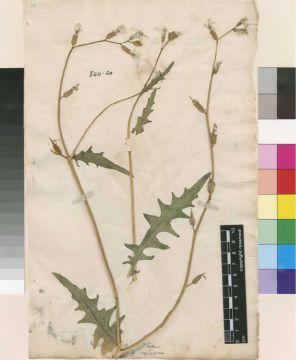
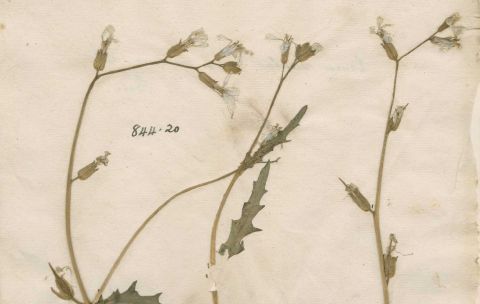
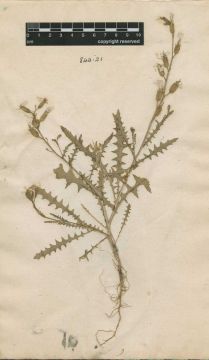

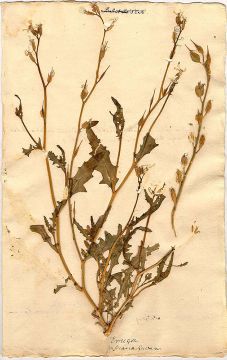
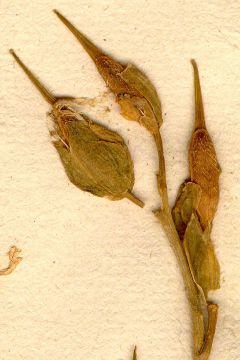
Cette roquette se distingue immédiatement de Brassica eruca => Eruca sativa par la forme de ses feuilles et par le calice qui reste adhérent autour de la silique.
This rocket is immediately distinguished from Brassica eruca => Eruca sativa by the shape of its leaves and by the calyx which remains adherent around the silique.
La roquette "vésiculeuse" renommée Eruca vesicaria par Cavanilles (1802)
The "vesicular" rocket renamed Eruca vesicaria by Cavanilles (1802)
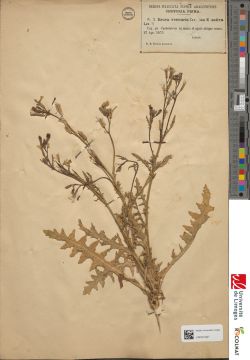
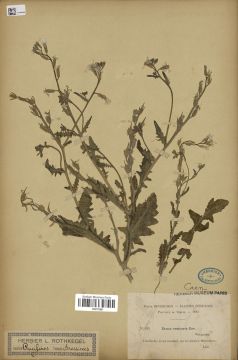

Eruca vesicaria en Algérie
Eruca vesicaria in Algeria
Une population de Eruca vesicaria est attestée dans les collines au Sud d'Oran :
A population of Eruca vesicaria is attested in the hills south of Oran :
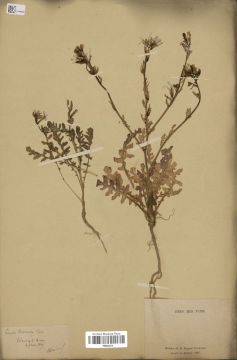
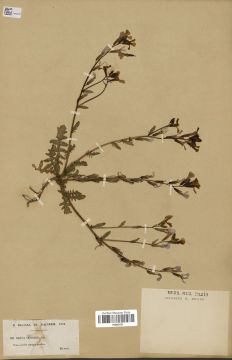


Eruca vesicaria au Maroc
Eruca vesicaria in Morocco
Maire dans la FAN cite E. vesicaria dans le NE du Maroc, entre la frontière algérienne et la Moulouya. Nous avons exploré cette zone, mais nous n'y avons trouvé que E. longirostris.
Maire cite aussi une population de E. vesicaria sur la côte atlantique, dans la région de Safi. Cette station a été retrouvée par A. Homrani-Bakali.
Maire in FAN quotes E. vesicaria in the NE of Morocco, between the Algerian border and Moulouya. We explored this area, but only found E. longirostris.
Maire also quotes a population of E. vesicaria on the Atlantic coast, in the viccinity of Safi. This station was rediscovered by A. Homrani-Bakali.
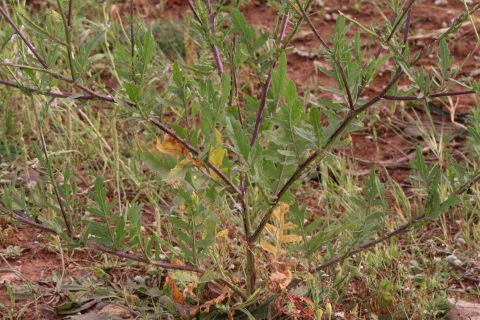


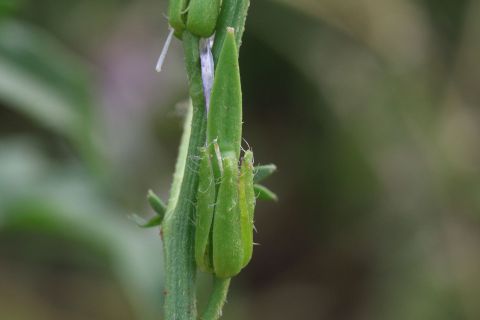
Relation entre Eruca sativa et E. vesicaria
Relationship between Eruca sativa and E. vesicaria
Il y a un étude très instructive de Sobrino-Vesperinas E. (1995) intitulée "Infertilidad entre Eruca vesicaria y E. sativa".
L'auteur commence par comparer morphologiquement ces deux taxons :
There is a very informative study by Sobrino-Vesperinas E. (1995) entitled "Infertilidad entre Eruca vesicaria y E. sativa".
The author begins by comparing these two taxa morphologically :

Cette description permet de vérifier que Sobrino-Vesperinas traite bien des deux taxons définis par Linné.
Puis Sobrino-Vesperinas a réalisé des hybridations expérimentales entre ces deux taxons :
This description makes it possible to verify that Sobrino-Vesperinas does indeed deal with the two taxa defined by Linnaeus.
Then Sobrino-Vesperinas carried out experimental hybridizations between these two taxa :

Le croisement E. sativa femelle x E. vesicaria mâle montre une fertilité du pollen réduite de 64% ; des graines sont générées en petit nombre et donnent naissance à quelques hybrides viables ; la fertilité de ces hybrides n'a pas été testée.
Le croisement E. vesicaria femelle x E. sativa mâle génère peu de graines et ces graines sont stériles.
La nature n'ayant aucune raison de simplifier le travail des botanistes en se limitant à leurs catégories trop tranchées, nous sommes dans le cas intermédiaire de deux taxons encore trop interféconds pour être traités strictement comme des espèces distinctes, mais déjà trop peu interféconds pour être traités comme des sous-espèces.
Sobrino-Vesperinas tranche alors : "Taking into account the existence of some morphological differences and the partial reproductive barriers, we consider as a correct taxonomic treatment the maintenance of the specific level for both taxons." La position de Sobrino-Vesperinas peut être critiquée, mais elle a le mérite d'être claire et argumentée et nous nous rangeons à son avis.
The crossing E. sativa female x E. vesicaria male shows pollen fertility reduced by 64% ; seeds are generated in small numbers and give rise to a few viable hybrids ; the fertility of these hybrids has not been tested.
The crossing E. vesicaria female x E. sativa male generates few seeds and these seeds are sterile.
As nature has no reason to simplify the work of botanists by limiting itself to their too clear-cut categories, we are in the intermediate case of two taxa still too interbreeding to be treated strictly as distinct species, but already too few interbreeding to be treated as a subspecies.
Sobrino-Vesperinas then decides : "Taking into account the existence of some morphological differences and the partial reproductive barriers, we consider as a correct taxonomic treatment the maintenance of the specific level for both taxons."
The position of Sobrino-Vesperinas can be criticized, but it has the merit of being clear and argued and we agree with his opinion.